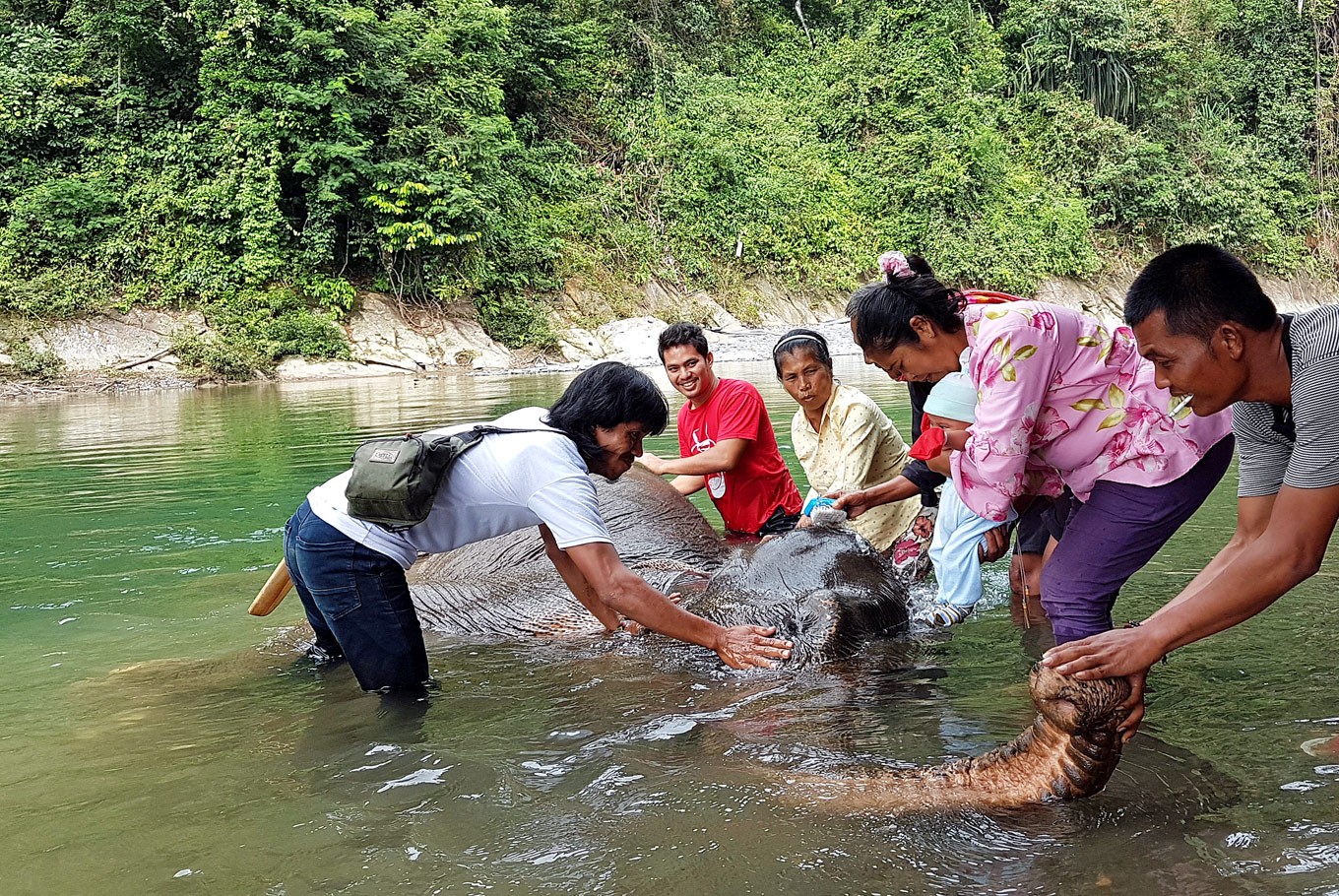Popular Reads
Top Results
Can't find what you're looking for?
View all search resultsPopular Reads
Top Results
Can't find what you're looking for?
View all search resultsExploring the jungle atop an elephant
Sitting atop an elephant evokes a feeling of steadiness and composure bordering on floating.
Change text size
Gift Premium Articles
to Anyone
Riding an elephant through the jungle is like riding a luxury 4WD sport utility vehicle in slow, leisurely motion.
Sitting atop an elephant evokes a feeling of steadiness and composure bordering on floating.
The concomitant bird’s-eye view reveals the big picture of the surrounding landscape. Down below, the massive mammal walks along dirt paths, some muddy some dry, with bumps and undulations.
Despite some bumpiness on uneven terrain, the ride is far smoother than the horse and camel rides I’ve had on flat ground, as the side-to-side rocking is minimized by both the animal’s slow-paced, leisurely stroll and her enormous weight. A sudden, brief rain shower interspersing the elevated ride feels like celebratory confetti.
I was taking a 1.3 kilometer, one-hour ride on a chair mounted on the back of Ardana — a 2.3 ton, 2.3 meters tall, 48-year-old female pachyderm, with mahout Raya Agus Ardan sitting in front of me holding the reins.
The trek started at the elephant bathing site at the pebble-covered Batang Serangan riverbank across from the jungles of Mount Leuser National Park in Aceh, and followed a trail previously made for water buffalos used to pull timber felled from the jungle.
Occasionally looking at the vegetation, Ardana moved slowly passed a wild nutmeg tree similar to one I saw in Papua, numerous lianas, another tree with leaves that smelt like cajuput and other trees I could not identify.
The ride ended at a site on the Buluh riverbank near a small hot spring cave that only one person could fit inside of. The river is rocky, making swimming difficult. There is also a waterfall.
The next day I rode Ardana again, this time on her bare neck with me holding the reins, for a much shorter distance, to cross the Buluh River where a group of fishermen sitting on the bank looked like sculptures, patiently waiting to catch jurung (mahseer), a fished caught by the Batak Karo people for ceremonial purposes that symbolizes fertility, as well as baung catfish.
Both rides were mini versions of the longer, more exciting ride to the hill top, mahout Katiyo told me, “where the view is indescribably beautiful”.
Hop on: A tourist is assisted by a mahout to climb atop an elephant. (JP/Arif Suryobuwono)Yet, Katiyo advises caution when taking the longer trek, especially when venturing deep into the jungle where one may come across tigers, pythons and cobras.
“I have run into a snake on a branch twice, one was red in color. My elephant immediately took action, pulling down the branch and throwing it away,” he said, adding that he once got stung by bees twice on the same day when the elephant he rode accidentally nudged a beehive.
Another possibility, albeit rare, is crossing paths with the wild elephants of Mount Leuser.
“We have identified a parade of 14. Of these, two males often come down to Tangkahan but the current policy is not to catch and tame them but to keep them in the wild. So, electric fences have been erected to keep them at bay,” said mahout Sudiono.
After the rides, I helped the mahouts bathe the elephants in the Buluh River, watched them play and swim, and then received a kiss on the cheek from the majestic animals in return for giving them bananas. Four Western tourists and an extended Batak family were also taking part in the experience.
Here you go: An elephant touches a tourist’s face with its trunk. (Hanni Adiati/File)The experience, made possible by the elephant-centered ecotourism and conservation program run by Tangkahan Conservation Response Unit, contrasts with Tangkahan’s checkered past when there was no elephant camp and the jungle was still being ransacked by illegal loggers.
Today, Tangkahan is a restored lowland and riparian environment located within two hamlets in Namo Sialang district, Kwala Buluh and Kwala Gemoh, with no apparent traces of its illegal logging past.
Yet, tourists normally come here to interact with the tamed elephants brought from Aceh, just as they visit Bukit Lawang, about three hours’ drive from Tangkahan, to see orangutans.
If the elephants were taken out of the equation, would Tangkahan retain its sense of being? Would its rivers and forest alone attract tourists and not just scientists and environmentalists? Only time can tell.










